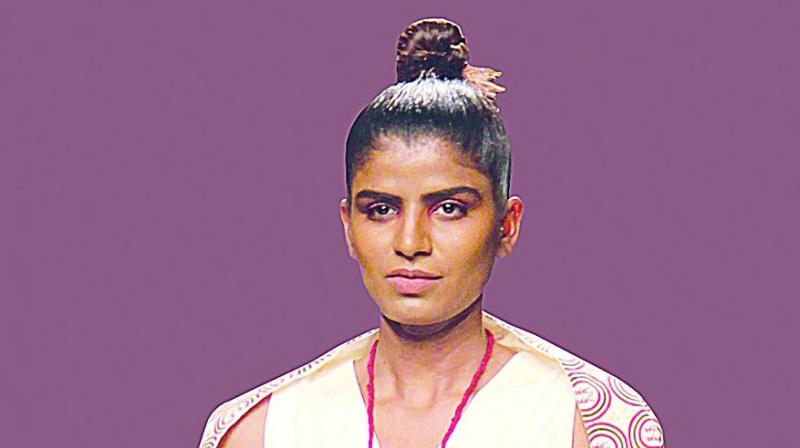Changing the face of fashion

Hailing from small-town Jodhpur, Sangeeta Gharu could never have imagined that walking the ramp would one day be a dream come true, especially since her father is a cook in the Air Force mess and mom, a homemaker.
All her life, Sangeeta recalls that she was laughed at and made fun of by school friends and family for being “dark and too tall”. “I struggled with confidence issues and became reticent. It took me two years to get selected for a ramp show even though I applied everywhere. I was rejected by everyone even after multiple auditions, and put myself through rigorous grooming sessions, all of which were self-funded. Most selectors thought my skin colour was not appropriate,” says Sangeeta, who admits that the derisive remarks still ring in her ears — “she’s ugly... she must be delusional to think she is model material...”
Growing up thinking that she did not fit in, Sangeeta still suffers from the trauma and believes that fair skin and light eyes are the gold standard of beauty in India, no matter how much we may say that we love “dusky girls”.
However, change is in the air. “I am really glad that the Fashion Design Council of India has given me an opportunity to walk for the Lotus Makeup India Fashion week, spring-summer’20 (LMIFW), with their theme being based on inclusivity this year. They are redefining what beauty means and how it should be perceived — not just on physicality, but on individuality too, which is heartening,” says Sangeeta.
This time, the FDCI has taken models not based on a particular height, weight or gender restrictions, by holding auditions in three cities — Delhi, Mumbai and Kolkata. Girls who would generally not make it to the list due to the inherent biases of the fashion industry, have now got a platform.
Interestingly, the world over, there have been many changes in this space, with the jeans brand Diesel choosing Winnie Harlow, who has vitiligo, as their muse along with Jillian Mercado, who was diagnosed with spastic muscular dystrophy as a teen. Incidentally, Mercado has been signed on by IMG Models, the first disabled model in the world to get this deal.
Fashion labels are also changing their sizes. Most brands don’t have sizes beyond 0-12, not understanding that most Indian women wear a size 12 or above. But J Crew has expanded its size to 24 now and wants to change how we look at “ideal” body type. Not surprisingly, the most coveted cover this time was of hijab-wearing model Halima Aden posing for Sports Illustrated wearing a burkini in the 2019 swimsuit issue.
This year will also see the mother of a teenager walking the ramp at LMIFW. At a time when most models hang up their boots or are sidetracked, 40-year-old Runa Laha is ready to sparkle in the spotlight. Selected at the Kolkata auditions by FDCI, she wasn’t allowed to take up modeling due to her father’s insistence that she study to become a professor. And even now, her mom thinks that she is wasting her time!
“I gave up my dreams for my parents and focused on an MA in political science and started teaching in a school, till one day my school friends commented on how much weight I had put on — 92 kilos after my C-section, to be precise,” reveals Runa.
The determined girl not only lost all the weight in a year, but she also applied for the Ms Kolkata competition and won it, thus beginning her journey into modeling at the age of 32, eight years ago.
“I started my career as a model in the year 2010. I have worked for several brands, including United Colors of Benetton, Lime Road, Colgate and more. Delhi was a far-fetched dream, but this time, it is a reality as I walk for LMIFW,” says Runa with a smile.

